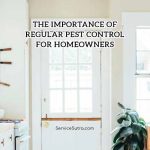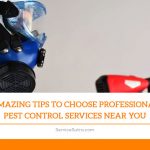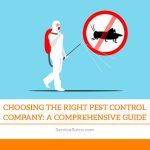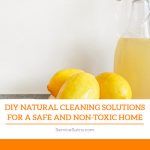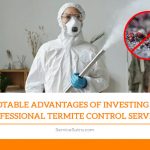Updated: January 21st, 2023
Pest control in India is evolving because pests of any type or breed possess a great threat, not only to farms, gardens, food production facilities but also in our house. These pests are responsible for causing epidemic diseases in our vicinity. In order to keep these pests away from our house and food sources, we heavily rely on various types of solutions for pest control in India. Contamination of food can occur during production, unsanitary conditions coupled with disease-carrying pests in food manufacturing units. Pest control can be really challenging even for small scale pest problems because these pests can grow rapidly and multiply faster. So in case of food processing facilities or warehouses where these pests can hide easily, dealing with the pests can be really a challenging task. Regardless of the operation or size, the consequences of any ignorance or error in pest control can be devastating.
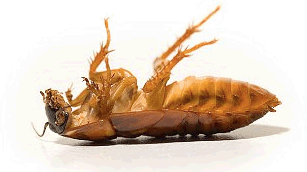
Common threats of pests at various places
Neglecting the pest problem can be really devastating, as we are already well aware about the spate of food contamination events, illnesses, deaths and recalls. The general problem that is faced by most of these food manufacturing industries are- growing mold on the ceilings, and rainwater leaking into the production areas that results in large gaps providing easy access for rodents and the presence of dead cockroaches throughout the facility.
Both cockroaches and rodents are known for carrying “Salmonella”, enterobacteria that cause typhoid fever and food poisoning, which can be found in rodent droppings and on the legs and bodies of cockroaches, easily contaminating areas around their vicinity. It can even lead to a major salmonella outbreak. This might land your company into a legal trouble as well, and your company will be held responsible for the health problems faced by the consumers of your food product, making your reputation thrown out of your window in no time. So it is extremely important to deal with these pests immediately and without fail.
Pest problems in food processing and storage environments
All your working staffs should be well aware of the outcome of neglecting a pest threat and should immediately report any pest activity (small or large) to the concerned department. Here are the most common pests that may cause invariably large damages.
Rodents
Rodents like mice and rats urinate and defecate in your vicinity resulting in accumulation of excrement that easily spreads bacteria and contaminates food. These rodent droppings are the major reason behind the transfer of pathogens that can cause diseases like Hantavirus and salmonellosis. Apart from numerous health risks and food poisoning problems, these rodents also deals great damage to your property also, by chewing through wallboard, cardboard, wood and even electrical wirings, thus posing a fire hazard too. According to a survey, each year, rats and mice contaminate and destroy enough food worldwide to feed 200 million people.
Flies
The common house fly is the most vicious agent that carries over 100 kinds of disease-causing germs, including salmonella and listeria. The filth fly along with these houseflies, breed in moist or decaying garbage or excrement. Mostly in the industry wastes and it keep moving from garbage & excrement to fresh food, processing equipments and other surfaces. They possess the main threat to transmit disease-causing bacteria and contaminate everything they come in contact with.
Cockroaches
Cockroaches are few of the most dangerous pests that deal great health threats to the mankind. These pests are the most insistent ones and require a lot of effort to eradicate them completely, it is believed that their survival instincts are very sharp, and they can even survive nuclear attacks, due to their extreme immunity against radiation. They are known to spread at least 33 kinds of bacteria, 6 kinds of parasitic worms and at least 7 other kinds of human pathogens, including Salmonella and cholera. They pick up germs and debris on their legs while crawling through sewage and debris, which they further transfer to food, food surfaces and processing equipments.
Best pest control practices
Facility management and pest control companies work together to provide efficient solutions against these pest problems. Since the facility management is responsible for forming the first line of defense against pests, by monitoring potential entry points and signs of infestations.
The NPMA (National Pest Management Association) has revised its manual to raise their standards for fighting pests and hence drafted few advises to stop them from infesting in your vicinity.
Make sure that your facility has proper waste management systems in place. Special care should be taken for the garbage disposal sites and overflowing of dumpsters which are easy catch for these pests and paradise for their breeding too.
To prevent them from entering your facility, seal all possible pest entry points around pipes, loading docks, the foundation, etc. Carefully scrutinize every nook and corner and ensure there are no leaks in the facility roof as well.
Keep the pallets away from the walls and use white color on your walls and aisles, so that pests and their droppings are visible, eliminate clutter that pests could hide and nest in. Install air curtains or screens to keep flying insects out.
Try not to use outdoor lightings that attract flies. Consider using sodium vapor lights to discourage pests that are attracted to light.
Perform regular inspections of storage areas, equipment, drop ceilings, processing areas, locker rooms, windows and ventilation and laboratories for signs of insect or rodent infestations. If found immediately inform to the management.
Conclusion
The presence of pests whether dead or alive, poses significant health risks. Irrespective of the size or severity of an infestation, a pest problem should never be taken lightly. Any half measure can lead to severe health or property damages. A strong pest management program and proactive prevention measures are essential to prevent these pests from wrecking on havoc on your organization. It should include regular inspections and audits, proactive pest-proofing measures and an immediate action plan to counter any potential infestation. Food manufacturing facilities should be well aware of the threats posed by pests, and acknowledge the significant contamination risks.
They should recognize the advantage of being proactive in pest management; this will enable them to achieve the benefits of operating at their safest and efficient production levels. These measures are essential for ensuring that consumers are getting safe and healthy food products only. Proper pest control programs will go a long way in keeping the company’s goodwill intact and its products safe for the consumers.

